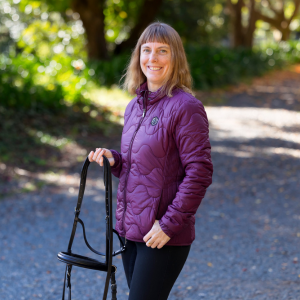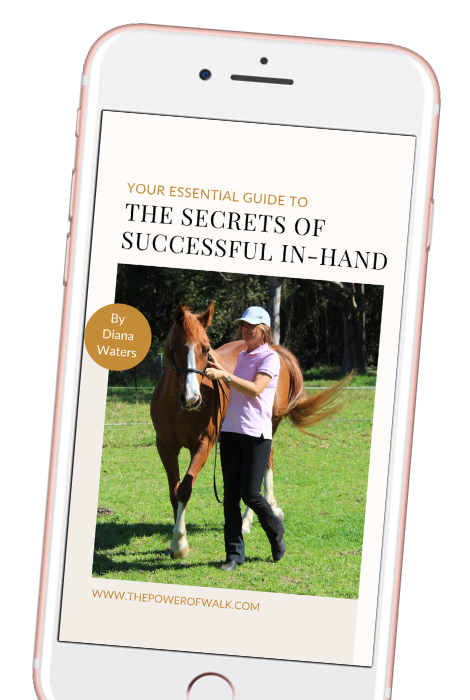
My thoughts following the Helgstrand dressage scandal...
In the wake of the Helgstrand dressage scandal, a few thoughts about what I know most about.. how coach training feeds into the multifaceted problem.
The justification of this type of training did not happen overnight and would have involved a lot of cognitive dissonance. The cognitive dissonance starts very early on and is passed down from generation to generation with chidren being told to hit, kick and pull ponies being told “it won’t hurt” and you need to “let them know who’s boss”. This is being taught by adults who were taught the same, and also taught not to question things. When I trained as an instructor, I went through a system where it was commonplace to ridicule and belittle anyone who either questioned, or was “soft” or didn’t push their horses and “get them on the bit”. I tried a lot of different training establishments to try and learn a better way, before concluding that maybe there wasn’t one, and for a while I rode exactly as taught in order to pass my exams. To do this I had to attend NLP therapy in order to push away my real feelings about how wrong it felt, and train as taught, as I believed that I might be able to change the system better from within.
Some direct quotes, while I was training, from BHSI’s and some from a FBHS (the highest qualification available from the British Horse Society):
“Get him going. It's not a Sunday afternoon stroll you know” By a BHSI.
“Why are you riding in a light seat?” When I tried to explain that the horse was only 4 and not yet moving correctly through the back, so I wanted to give the back a break, I was told “That’s ridiculous. You wouldn’t see Carl Hester riding in a light seat” from a Fellow of the British Horse Society. (I wonder if Carl knows he is being referred to in this way?)
By a BHS examiner “He wasn’t on the bit. You should have see-sawed your hands to get his head down.”
By a BHSI, I was instructed to hit a 6 year old horse as hard as possible to get him moving. He was refusing to move, not wanting to jump the course of 110cm jumps. He was used subsequently in my Stage IV exam, refused to move with me, and bolted with the next candidate. There was never any discussion as to whether there could be a physical issue with the horse.
During lessons and exams we were encouraged to move off immediately in trot (in exams the horse was warmed up prior by other students) and must get the horse on the bit within 20 minutes before swapping horses, which I was taught to do by pushing with strong legs into a strong contact.
Having passed my exams, I went about trying to bring about change. I put in an official complaint about the treatment of the 6 year old horse, but it wasn’t followed up as it happened “too long ago”. I wrote to the British Horse Society about the problem in general. To give them credit, they did publish my letter, but with a reponse basically denying the accusations. The response stated that you wouldn’t pass your exams if you rode in this way. But I clearly passed all of mine, up to and including Stage IV dressage!! By this stage I was beginning to wonder if there was actually a kinder way to ride, or maybe riding wasn’t ethical at all. This, I realised, could be rather a barrier to me achieving what I wanted to achieve.
Something good did come of the letter, however, as I was contacted by Heather Moffett after she read it. She invited me to her yard and showed me a kinder way to ride. I was overjoyed to see gentle riding, respectful treatment of horses and students, and most importantly horses who were joyful in their work. Most of what I know now is thanks to Heather who is still my mentor. Heather has contacted the BHS on numerous occasions offering to help with overhauling the education system, but to no avail.
This is my experience, and I tried very hard to find a better way within the BHS. I am not saying that all BHS instructors are trained in this way, but my experience tells me that the majority are. I did qualify a long time ago so perhaps things have changed, but the latest BHS promotional videos seem to still be showing this style of riding which suggest they haven't. From what I have heard and experienced, the instructor training system is similar in many other countries as well.
Of course, there are many other reasons for the issues highlighted by Helgstrand .. relating to culture and judging, and the nature of competitions, as well as greed and the perceived desire of the public to see bigger and flashier movement.
My usual strategy nowadays is to forget about what I don’t like and focus on what I do like. It feels so overwhelming to think of all the horse abuse that is going on. I am less than perfect, and I believe I can make the most impact by being honest with myself and challenging myself to do better. This makes a much bigger impact than worrying about what everyone else is doing wrong. Every day when I train my horses, I try to be honest with myself about whether I am being true to my values. Could that training session have been better – am I always prioritising my horse’s enjoyment and the physical benefit to the horse of the work (I try to but sometimes I make a mistake). Did I ride for too long and keep trying something for too long when I should have gone away and figured out why the horse wasn’t able to do what I was asking? I am so grateful that now, free from the expectation of competition or exams, I am able to examine my own practices every day and take a path that feels right for me.
I would like to encourage everybody to question if something doesn’t feel right. If you are a student, question your coach. A good coach encourages questioning. If they discourage questions, or worst belittle you for asking, then they are the wrong coach. There are good coaches out there who teach a kinder and gentler way. They are not always qualified. It is well worth the hunt.
Photo: My absolute number one thing that I look for to judge whether work is ethical and beneficial is the horse’s facial expression.



